Geranium is a bright decoration of the home windowsill of a friendly hostess. The plant is common among indoor flower lovers for their unpretentiousness and continuous flowering during the growing season. Pelargonium is unpretentious, but pruning in the summer requires pruning in the fall. The operation is carried out according to certain schemes, following the recommendations.
Content
- 1 How to prune geraniums in the fall
- 2 The purpose of autumn pruning
- 3 Time spending
- 4 Features for different types of pelargonium
- 5 Scheme of work
- 6 Features of care for geraniums after pruning
- 7 Crown formation
- 8 Step-by-step instructions for conducting spring procedures
- 9 Care after work: table
- 10 Mistakes when cutting geraniums at home
How to prune geraniums in the fall
Geranium is grown not only at home, but also on a personal plot. Depending on the variety, it has lodging, curly or erect stems. The plant can be tall (up to 50 cm in height), and dwarf - the length of the stem does not exceed 20 cm. For different species, various pruning methods are used. The formation process depends on the wishes of the grower himself, when pruning, you need to think about which plant you need to get.
Regardless of the variety, it is necessary to form a bush constantly. It is very difficult to carry out high-quality pruning in one approach. The first plucking is carried out after planting the cuttings in the ground and successfully rooting, when the roots braid the entire soil, cut off the growth point. This is necessary to stimulate sleeping kidneys located on the handle.
Without human intervention, pelargonium is poorly bushy, in one year the stem is significantly exposed. Pruning provides lush flowering, because peduncles are more likely to develop on young shoots. It is necessary to remove the branches growing inside the bush to maintain symmetry. The cuttings obtained during pruning can be used for propagation of the variety.
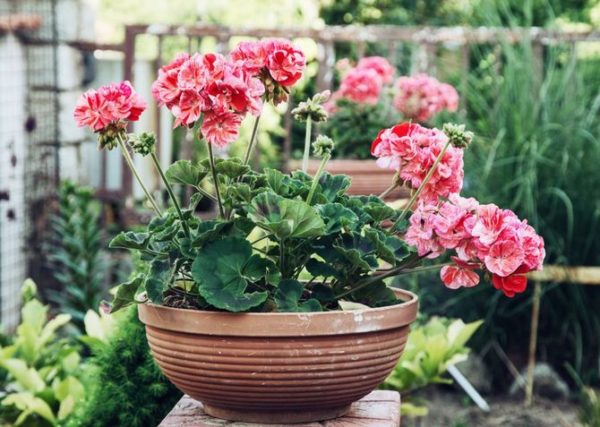
The purpose of autumn pruning
Autumn pruning is carried out after the end of the growing cycle. Geranium retires in late September and early October. Peduncles that form at this time are removed because the plant needs rest. Pelargonium is fed before wintering and extra branches are removed. Trimming Objectives:
- lush flowering in spring and summer;
- optimization of leaf nutrition;
- restoration of normal air exchange;
- metabolic acceleration;
- the formation of a lush crown, new shoots and branches.
The ultimate goal is the healing and rejuvenation of the bush.
Time spending
Pelargonium in the fall to prepare for wintering on their own, because the grower should help the plant, providing peace during the winter. To do this, you need to reduce the air temperature to 5-12 degrees, reduce watering to a minimum, and put pelargonium in a lit place. If a plant throws a peduncle in the fall or winter, it must be removed in order to enjoy the lush flowering hats that rise above the array of green leaves in spring.
Pelargonium pruning in autumn means getting rid of all shoots that have grown and stretched over the summer. In addition, the flower should take a break from active flowering in the summer, without wasting energy on additional nutrition of peduncles and extra stems.
You need to trim the indoor geranium immediately after flowering, systematically preparing the bush for the rest period. Since different varieties complete the growing season at different times, it is impossible to indicate clear dates. Zone geraniums in an apartment can bloom year-round, but this should not be allowed.Peduncles begin to be removed at the end of September, in order to trim in October. The period from November to March is listed as dormant time, but despite this, the plant continues to grow and produces new shoots, which often have to be cut in the spring, because they stretch out due to lack of sunlight.
Features for different types of pelargonium
The pruning principles vary depending on the variety and desires of the grower. The main principles are:
- The bush is carefully inspected and manually removed by decaying, weakened, yellow leaves and sluggish buds.
- Side shoots are gradually removed, leaving 1-2 strong.
- Lower leaves are removed from the remaining stem.
- If the stem is too long, it is shortened to 10 cm in height.
- Curved side shoots must be removed.
- Ashes of slices are applied ash or crushed activated carbon to prevent fungal infections and rot.
The listed rules apply to zonal varieties characterized by erect stems. Royal, ivy geraniums are treated differently.
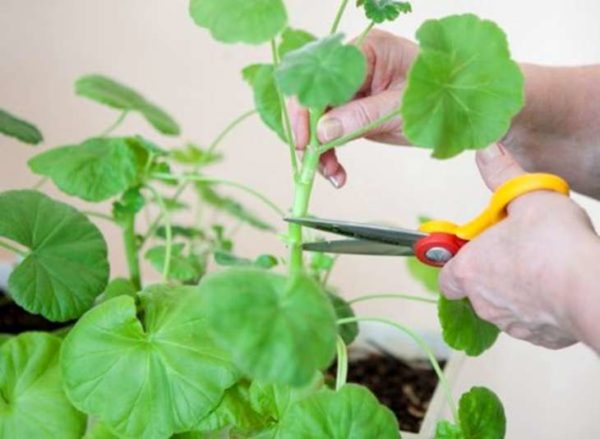
Key recommendations depending on species:
- Stellar is an indoor plant, a hybrid unsuitable for planting in open ground. Despite the fact that the dwarfish variety requires annual pruning, which is carried out in the fall, the shoots are shortened by 50%. In winter, new branches develop slowly, leaf mass grows in spring, and buds form.
- Tulip - tulip-shaped pelargonium. It got such a name because its inflorescences, even with complete dissolution, look like undisclosed, small tulips. In the absence of pruning, varieties lose their characteristics, therefore formation is necessary. The material obtained during pruning can be rooted in the spring, but obtaining varietal traits of the mother plant is not guaranteed. Over the summer, tulip-like varieties are very elongated, first-year plants poorly form lateral shoots, therefore, forming pruning is carried out even in summer.
- Unique - unique, different aroma. By type of shrub, they are similar to zonal, and by type of flowering, they are royal. The only type of home pelargonium that needs only rejuvenation and healing, the formation of a lush bush occurs independently. The variety is old, but rare, in home collections it is not easy to find.
- Zonal is the most voluminous species, numbering more than 75 thousand varieties. It is zonal pelargonium, the very “grandmother's” geranium that often grows at home and in front gardens. Varieties are unpretentious, willingly and abundantly bloom from spring to autumn, after the end of the growing season, they need to be formed.
- Angel is a houseplant combining varietal features of royal and ampelous species. When pruning, curly shoots are shortened by a third. Flowering is possible only on young branches.
- Colored Foliage - variegators. These varieties are distinguished by variegated foliage, the group is not numerous, but includes both zonal and coniferous species with variability manifested in the leaf. A variety that is demanding in light conditions and needs to be trimmed. It is carried out in autumn, leaves and shoots that are damaged and have no signs of variegation are removed.
- Cactus - cactus-like. Miniature varieties that, under sufficient lighting, are formed independently. If there are few shoots of light, the stalk is bare, the lack of sunshine can be indicated by the absence of flowering. When pruning, pinch the crown and remove the lower leaves.
- Regal - Royal Pelargonium. This species includes the most capricious varieties that do not scrub and do not bloom without formation. For lush flowering for the winter, you need to lower the temperature to 15 degrees, lower marks are detrimental to the variety. Pruning is carried out only in autumn, since the plant lays the bud buds in winter.Formation is carried out 2 weeks before the planned decrease in temperature, because the slices must be tightened. Pruning in the spring is unacceptable, because it will interfere with flowering.
- Scented-leaved - scented geranium. The leaves of the plant have the smell of lemon, needles, mint, Coca-Cola, chewing gum, fragrant Kenzo water. It is not formed willingly on its own, because in autumn, the lower leaves and part of the central ones are removed, the elongated crown is trimmed and rooted. Plants are flowering, but the buds do not represent decorative value.
Caring for each variety does not have significant differences, but the royal, tulip and cactus species are more whimsical in comparison with the zonal. Regardless of the type, pruning is the key to formation and lush flowering.
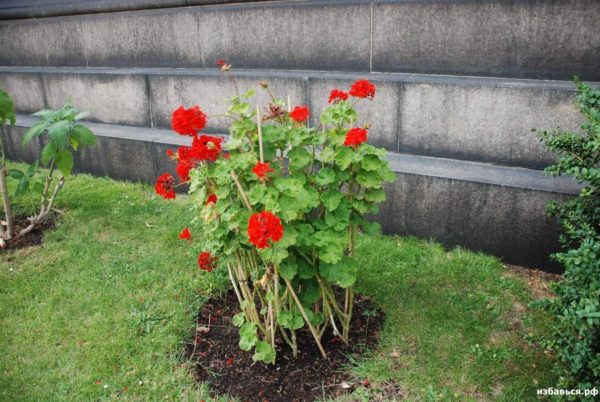
Scheme of work
The work ensuring the formation of the plant must be carried out in compliance with simple rules:
- For work it is better to use a clerical or ordinary table knife. Secateurs or scissors pinch the stems of the plant and injure healthy parts of the plant.
- The knife needs to be sharpened or the blade changed. Be sure to work with an antiseptic (alcohol, chlorhexidine, peroxide).
- Work is best done with sterile gloves so that bacteria from the hands of the grower do not fall onto a fresh cut.
- Slices are done at a slight angle, retreating about 5 mm from the sleeping kidney.
- Fresh cut sprinkled with activated charcoal. Some gardeners recommend the use of brilliant green, but this cannot be done. The solution contains alcohol that is harmful to the plant.
- A pot with a plant is put in a lit place, reduce watering and exclude any top dressing until February.
When preparing geraniums for the winter, first, lateral shoots are shortened by half from the initial size, and then the height of the bush is adjusted by cutting off the central part. The scourge of ivy geraniums and angelic pelargoniums are often greatly stretched during the summer, because they are shortened to a length of 15-20 cm. Pruning is necessary if it has more than 7 leaves. Angels and climbing varieties bloom in late summer, so they can be formed in the fall and spring.
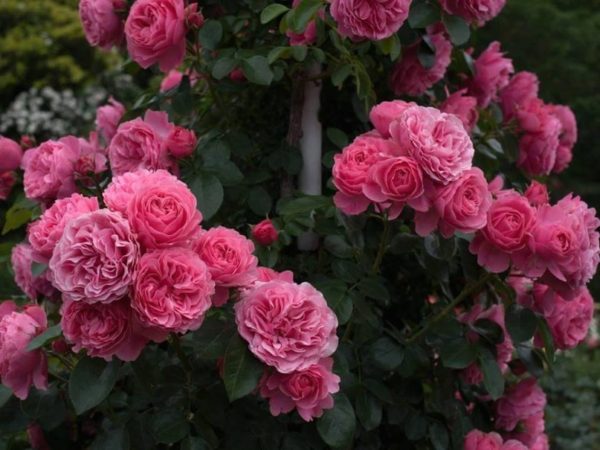 You may be interested in:
You may be interested in:It is necessary to provide care for geraniums at home. When to crop and how to do it, the photo below shows a diagram that provides a healthy, flowering bush.
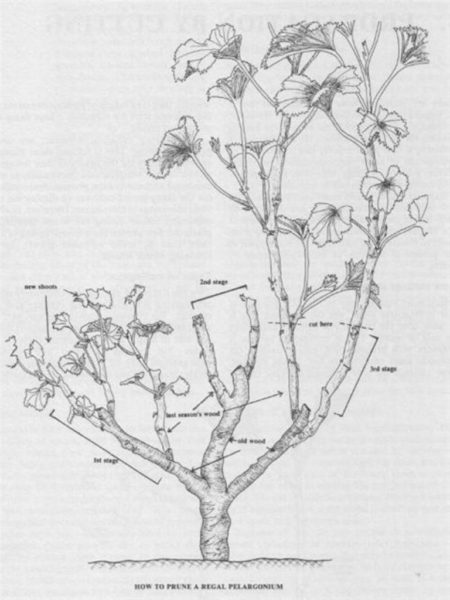
Features of care for geraniums after pruning
After trimming and forming, the bush is sent for wintering. It is necessary to reduce watering, lower air temperature and ensure sufficient light conditions. Cropped stems are used to propagate an existing variety. Vesta cuttings are planted in flowerpots or in open ground. They develop quickly and will certainly bloom in the summer.
To simplify care after the end of the growing season, a table containing information on preparing for wintering and plant restoration in spring will help
| Month | Watering | Light mode | Top dressing | Humidity | Temperature |
| October | Reduce to 1-2 times a week | The most lit place | Spend the last top dressing | Do not spray the plant; getting water on the leaves is detrimental to any kind of geranium | Reduce to 8-12 degrees |
| November | Do not spend | ||||
| December | |||||
| February | As the earthen coma dries, preventing its drying out | ||||
| March | Watering in small portions, but regularly | Proceed with fertilizer stimulating flowering | The temperature is increased to 15-17 degrees | ||
| April | Adequate watering, eliminating excessive soil moisture | Top dressing is applied to the soil 2 times a month | Plants after raising the temperature at night to 0 degrees are taken outside or planted in open ground |
Listed Rules for Handling Geraniums provide successful wintering. The plant loves a cold wintering, but does not tolerate a draft, therefore, during the ventilation of the room, the plant needs to be removed from the windowsill.
Crown formation
It is necessary to begin the formation of the crown immediately after the planting of a new cuttings in the ground. To do this, pinch in the spring, and a full pruning is carried out in the fall.
To form a dense bush, you must follow these rules:
- Work is carried out with pre-processed tools.
- Be sure to cut the shoots, the growth of which is directed inside the bush to prevent thickening.
- If the bush is stretched and the distance between the leaf petioles exceeds 5 cm, pruning will not help, you need to adjust the light mode.
- Cut off all damaged stems and leaves.
It takes several months to form a lush crown; therefore, it is not worth counting that after the first pruning, the bush will be lush and plentifully flowering. The basic rule is the regularity of the procedure according to the algorithm: pinching in the spring, and pruning in the fall.
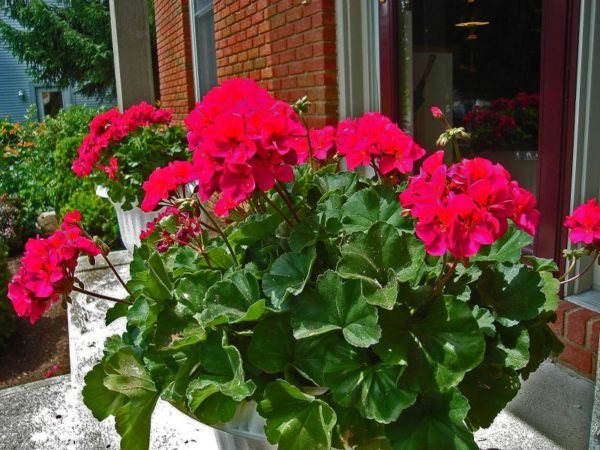
Step-by-step instructions for conducting spring procedures
Geranium is a plant, a plant that is sensitive to light, because a lack of light causes the shoots to stretch, the leaves to dry, and the plant itself stretches up. In summer, it is better to plant a flower in the open ground, but in order to smoothly prepare the plant for such a transition after wintering, in the spring flowerpots are placed on a balcony or a glazed loggia.
Care in the spring begins with the restoration of normal, plentiful watering, top dressing and pinching. Despite the fact that the plant is well related to direct sunlight, it is necessary to accustom it to spring exposure gradually. In early spring, the geranium bush must be shaded at noon, otherwise red stripes will appear on the leaves, they are not dangerous, but indicate an excess of direct sunlight.
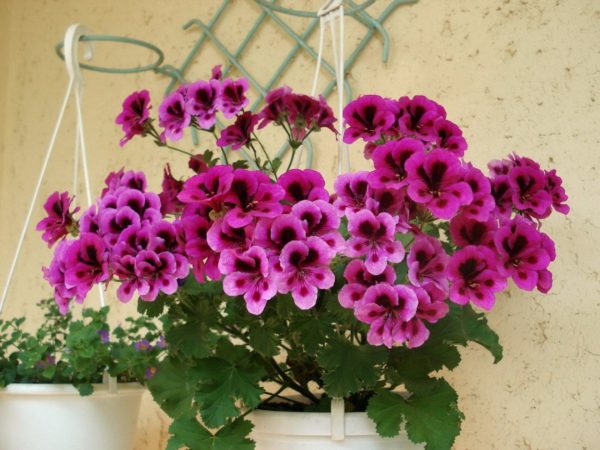
Care after work: table
A pruned flower needs to be respected. The optimal conditions for the restoration of deciduous mass, good formation and flowering in the spring are presented in the table.
| Content | Optimal performance |
| Temperature | Up to 18 degrees, it can tolerate a temperature drop of up to 4 degrees at night. An adult bush tolerates a drop in temperature to 0. |
| Illumination | The most lighted window, preferably south or west. On the northern windowsills will not bloom, despite the pruning. It tolerates direct sunlight. Sensitive to sows. |
| Air humidity | Spraying the plants is not carried out. |
| Watering | Watering as the topsoil dries. |
| Supplementary food | Do not use organic fertilizers for top dressing, it is necessary to apply universal fertilizer to flowering plants 2 times a month in the soil. |
Compliance with simple rules for the care of a guarantee of rapid summer flowering, which lasts right up to the canopy.
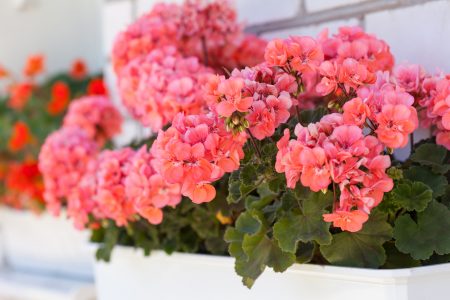 You may be interested in:
You may be interested in:Mistakes when cutting geraniums at home
Cutting geraniums for the winter is quite simple, this process is absolutely painless for a healthy plant, if the grower complies with the timing of the pruning and its technology.Violation of the basic rules can cause consequences for the plant:
- Failure to comply with the recommended deadlines. Trimming geraniums in deep winter is not recommended - this is stress for the plant, because flowering in the next season will not happen or will not be so plentiful.
- Trimming at a great distance from the sheet unit. Will lead to drying and dying of the upper part. Because of this the whole plant may die.
- Massive pruning. Loss of leaf mass in the amount of over 60% of the initial amount is detrimental to geraniums.
- Manipulation is carried out often. Prevents normal bud bud formation.
- Rejuvenation of an old bush in the autumn. Autumn haircut is beneficial only for healthy plants, the withered old geranium probably will not tolerate manipulation. Reanimate the bush after increasing daylight hours.
Each grower can create a well-groomed, lush, healthy flowering bush. Caring for a bush is very simple. To do this, timely cut the elongated shoots and regularly rejuvenate the plant. Like any flowering plant, pelargonium during the growing season needs regular fertilizing with potassium fertilizers.

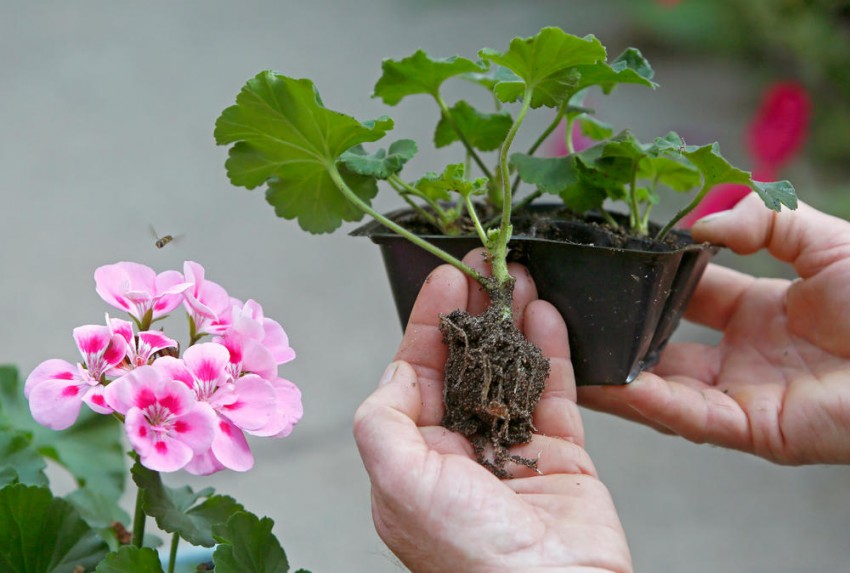
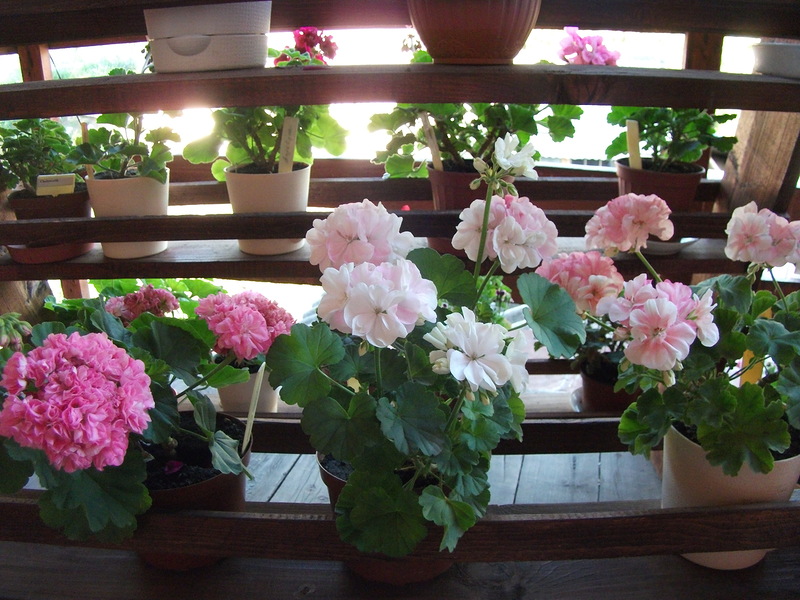
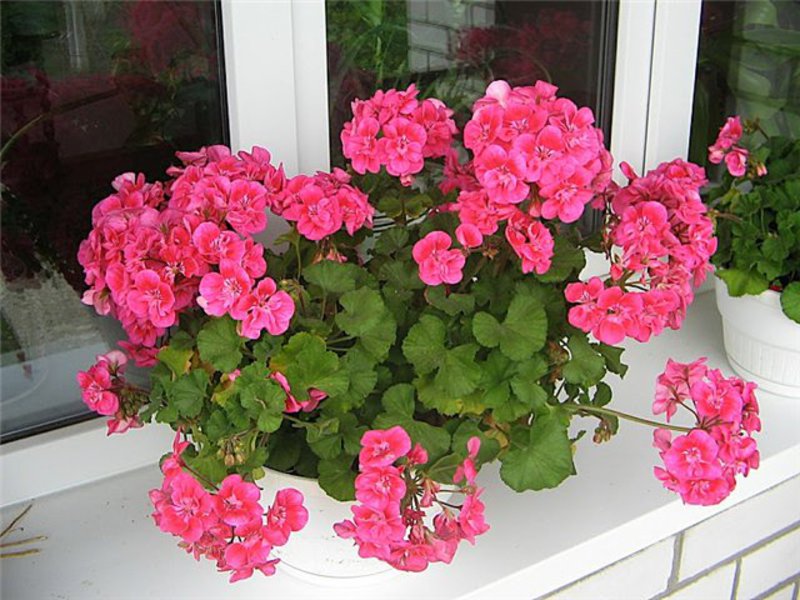
 Geranium is not only a beautiful plant, but also a folk remedy for diseases
Geranium is not only a beautiful plant, but also a folk remedy for diseases